Site Preparation & Mobilisation – The key to successful construction projects
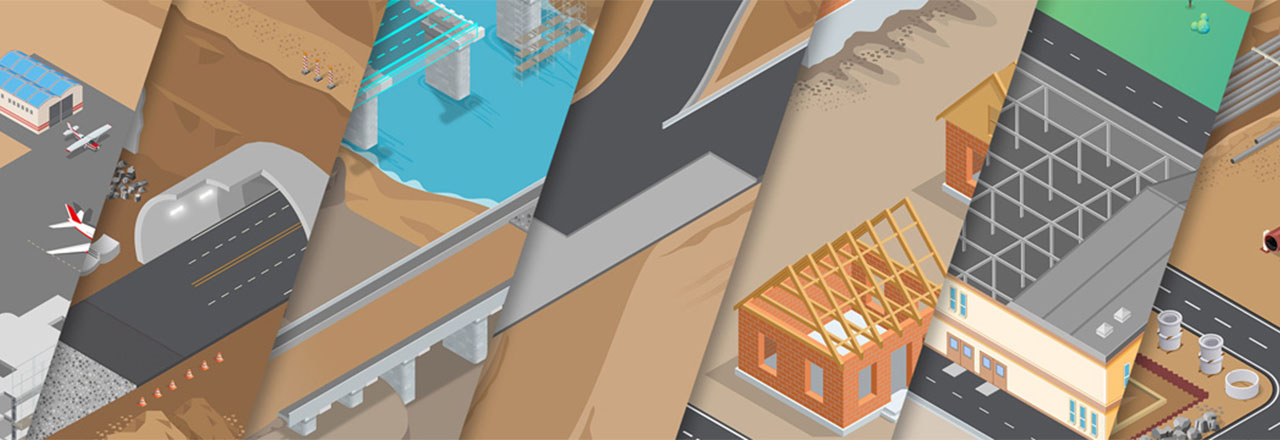
Being awarded the next big job can be a time for celebration or can keep you up at night worrying about what you have missed and why you were the low bidder. As exciting as it is, winning a bid is just the start of the process. Before putting any shovel into the ground and turning any dirt, contractors have an opportunity to put in place a framework for success for the entire job. They face many potential pitfalls, whether managing resources, documenting progress or grappling with unforeseen challenges. Contractors need unprecedented insights into every aspect of the job. They need real-time data to inform decisions to ensure it is profitable and avoid costly overruns.
Whether you’re a contractor, working on a lump sum bid or managing unit price contracts, understanding the unit quantities for all volumes, lengths, areas and counts is the cornerstone of winning profitable work and avoiding the costly project from hell. But getting the unit quantities right is just the beginning. Now comes the hard part of allocating resources (financial and human capital) and creating a detailed plan before breaking ground.
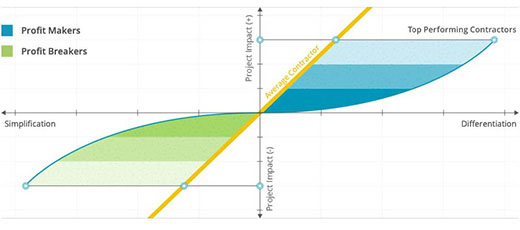
Common points of project failure and overruns include:
- Design complexity
- Unforeseen design changes and revisions
- Complexity of the terrain and underlying strata
- Availability of resources (men and machines)
- Data and equipment management
- Documentation of progress
- Training and skills development of the workforce.
The good news, technology can help minimise a number of these risks by adopting Advanced Digital Construction Management processes.
What is Advanced Digital
Construction Management
(ADCM)?:
technologies that are used to help minimise
project risks and provide transparency of
project progress throughout the construction
life cycle. In other words, it’s about placing
digital technologies in the hands of
construction stakeholders to help:
- Boost productivity.
- Manage complexity.
- Reduce project delays and cost overruns.
- Enhance safety and quality.

While every project is unique and requires a different approach to Advanced Digital Construction Management, eight core elements of ADCM make up best practices and work from one jobsite to another.
Dodge Data & Analytics has consistently revealed that increasing the sophistication of data collection helps contractors improve productivity, safety and profitability.
More than half (56%) said it would improve bid estimation, while a similar number (52%) said it would improve productivity and (51%) improve budget performance. Nearly half (48%) said it would improve safety
It is, however, not always an easy task to prepare people, technology and precious resources. A lack of skilled workers, increased labour costs, and decreasing margins add to the difficulties in completing jobs on time and within budget.
Let’s evaluate the ways each of the eight core elements apply to the modern jobsite.

#1. Construction Design
It starts with a firm understanding of the landscape: Before rolling equipment onto the jobsite, contractors need to understand the intricacies of the location. Doing so will help them make informed decisions and embrace the best approach to complete the project.
Missing or incomplete information is often the downfall of a project and can lead to incorrect decisions. By using accurate positioning technology to capture or validate existing conditions, can help prevent costly delays and incorrect bids.
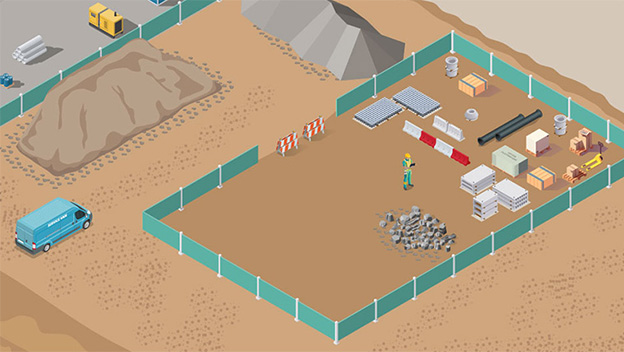
#2. Revisions And Change Requests
Whether it’s design updates, change requests or scope adjustments, revisions are a part of the job. While there is no way to eliminate them, contractors can better prepare to make such adjustments in stride.
Technology enables supervisors to stay connected 24/7 and without the need to be on the jobsite. So, they can make decisions remotely in real-time and share updated plans and information with stakeholders.

#3. Back-up - IT, data, technical components
Challenges are inevitable on every site and that’s why you need back-up when things don’t go as planned. Data security is a mission-critical imperative in a world filled with cyber threats, making it as critical as the project plans themselves.
Whether it’s backing up project plans, user guides or spare components to complex methods such as cloud-enabled data recovery, the safeguarding of data is as important as collecting the data.
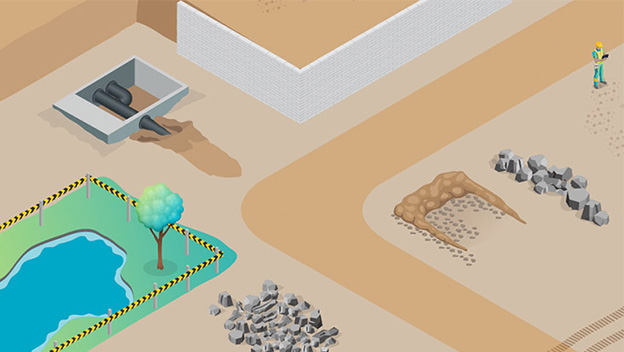
#4. Terrain
Construction terrain involves the undulation of land, accessibility, make-up of the underlying strata, balance of material and network coverage. Job sites with hard-to-access areas and other challenges, such as no internet access or poor Global Navigation Satellite System (GNSS) availability, post a potentially significant problem.
The key is to avoid and prepare for those challenges before they become time-consuming and costly. Technologies such as digital terrain modelling, 3D machine control, laser scanning, robotic total stations, advanced GNSS rovers and underground detection solutions enable teams to work quicker and more safely.
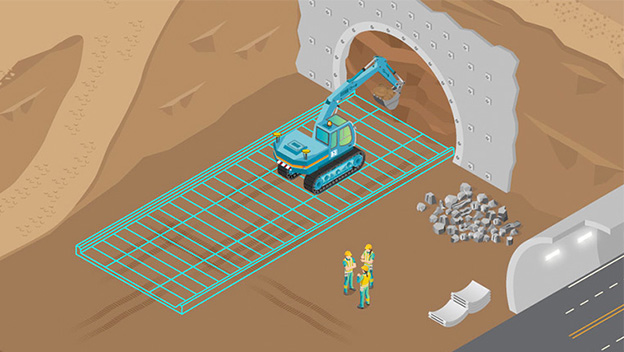
#5. Construction Resources
Construction Resources are the people, systems and machines required to complete a project safely, on time and within budget. Rising material costs are one of the most significant threats to a contractor’s bottom line. Coupled with inflation and the ongoing labour shortage, contractors don’t have much wiggle room for unexpected cost increases.
Easy-to-use software solutions can help contractors expedite their estimates and ensure their accuracy. It also allows them to monitor the use of construction materials throughout the project.
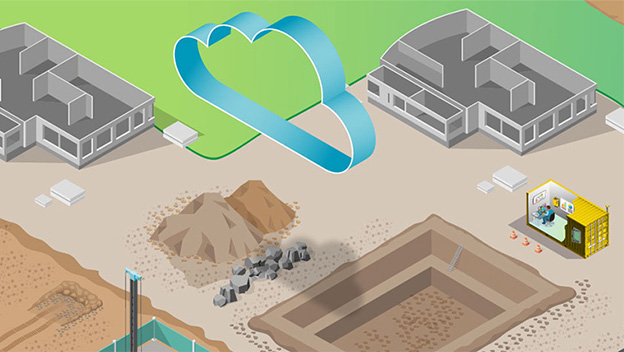
#6. Data Management
Data management is the practice of collecting, sorting, processing and distributing information to the right teams and machines at the right time, in the right format and on the right device. Believe it or not, data is the most powerful tool on the jobsite today.
The magic happens when data is turned into insights. Used correctly, it can help contractors to make informed decisions to ultimately increase productivity, save costs, ensure safety on-site and the quality of the job.
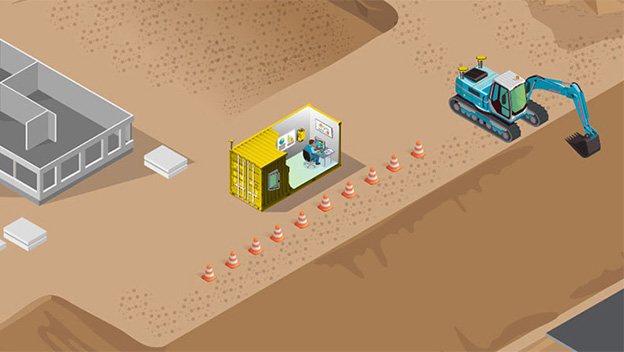
#7. As-Built Information
Before breaking ground, it’s important to establish milestones to track throughout the project. Managing As-Built information allows you to share up-to-date project progress with the various stakeholders. Many projects carried out do not match those initially planned, some due to implementation issues or challenges encountered during the construction phase. Thus, it is inevitable that the tool used should provide real-time and accurate information on the project’s progress versus the milestones agreed before breaking ground.
However, digital as-builts have endless potential to enhance safety throughout the project and save time and money by ensuring projects are built according to specifications.
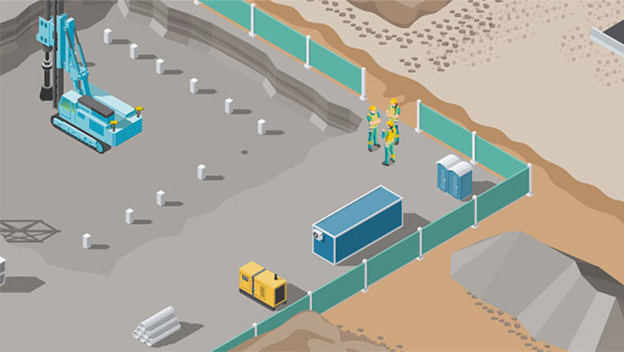
#8. Team Preparation
Another important consideration is selecting the right people for the job based on the project scope. Again, it’s about supporting the personnel to do their jobs efficiently, such as through training and up-skilling where necessary. Most contractors anticipate a growing quantitative and qualitative skill shortage. Successfully implemented technologies are easy-to-use and collaborative, allowing generalists to quickly be productive. Providing a modern working environment and embracing digital technology, not just attracts a skilled workforce but also retains talent.
Managing data throughout a project is a struggle for many contractors. Using inaccurate or outdated data can lead to poor decision-making and planning, which in-turn leads to resources not being available when needed, delays, and an increased need for contingency plans. This can lead to increased stress for management, raising client doubts, additional rework and delays due to miscommunication or RFI’s (requests for information), resulting in days and dollars lost.
Plus, there are other missed opportunities, such as discovering opportunities to create efficiencies, identifying risks or issues prior to the deployment of resources (when project delays are more expensive), and the ability to automate certain functions, so you can streamline processes.
The degree to which a project fails or succeeds strongly correlates with the degree the company performed at the above eight elements. Analyse your data management practices for all eight aspects of the construction process to determine how your data management can be improved, so you can complete projects faster, at less cost, and feeling more confident about projects going to plan.
Get Ready For Your Next Project
The simple truth is that efficiency is where money is made. To achieve that, you need to get the various project stakeholders on the same page. And as shown above, the eight variables can be potential profit makers or breakers on your upcoming project.
The big question is: Are you ready to find out what your project needs?
Join us at BAUMA 2022 and learn more about how Hexagon can help you effectively prepare your people, products and precious resources. Visit us at Hall A2, Booth #137 and explore the latest innovations and hands-on demos with the experts ready to answer any questions.
Prepare yourself by answering a few questions about your next project and receive a personalised PDF with insights, suggestions and support that will help you master your next project safely, sustainably and profitably. START YOUR ASSESSMENT
Connect with the expert


Plan your next construction project
Answer a few questions about your next project and receive a personalised PDF with insights, suggestions and support that will help you master your next project safely, sustainably and profitably.